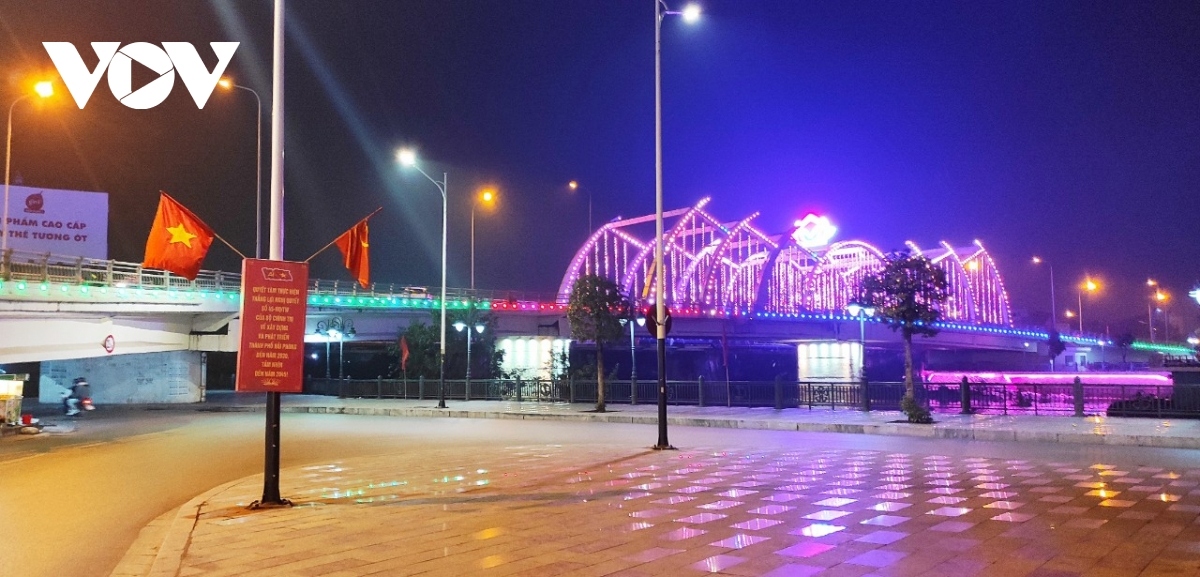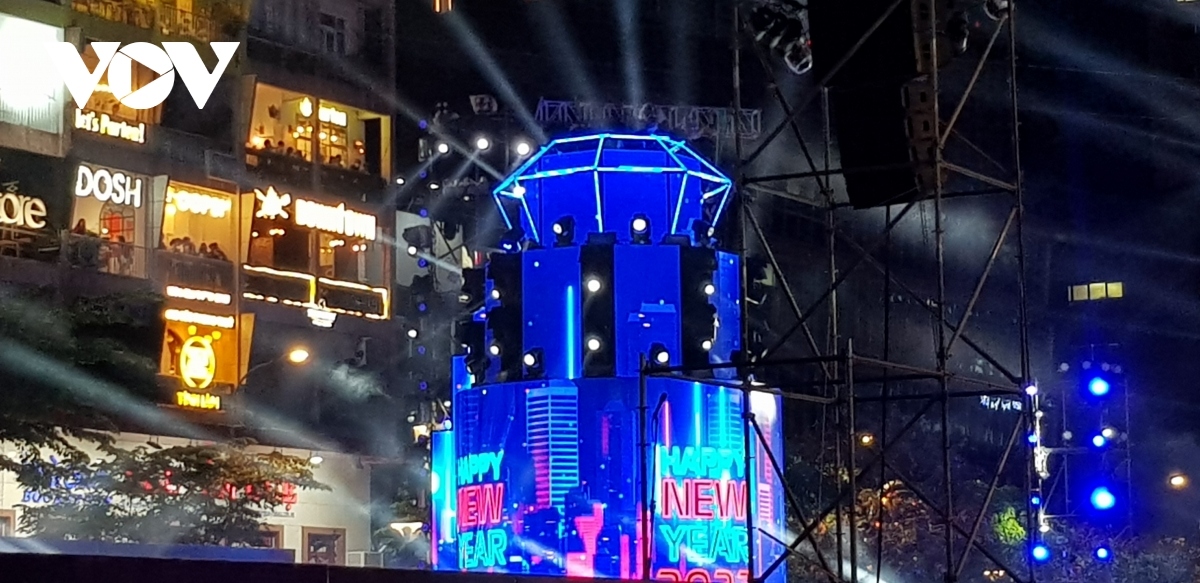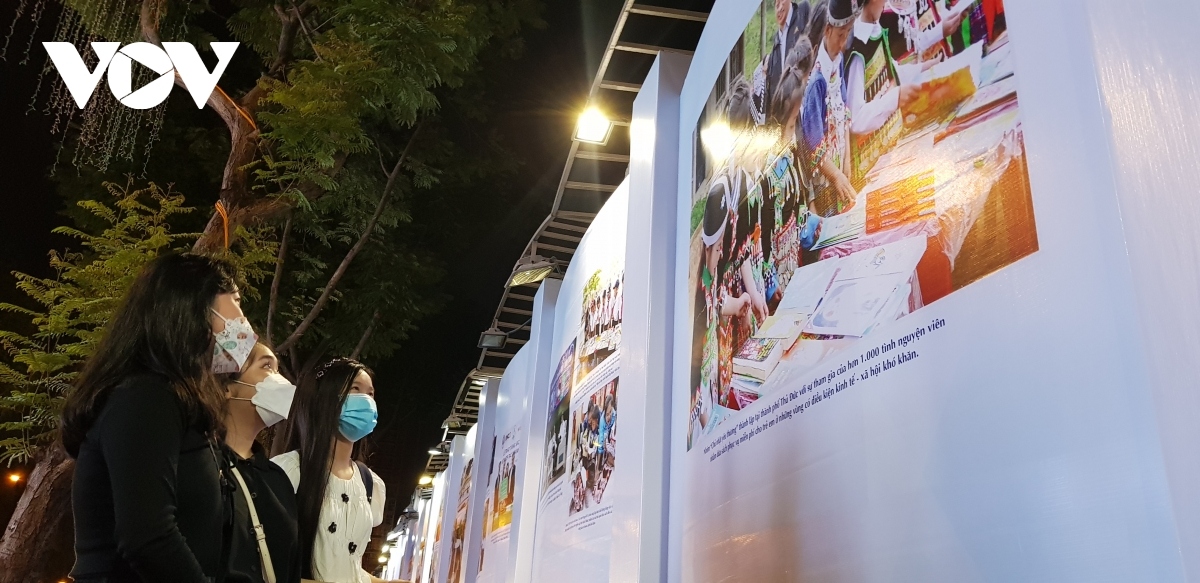Darkest before the dawn: signs of optimism ahead after tough 2021
VOV.VN - As Vietnam is kicking off its booster jab campaign, easing restriction and resuming international air routes, there are signs ahead that a return to normality might be just over the horizon.

With 2021 drawing to a close a subdued atmosphere has fallen over this year’s festive celebrations. Whilst last year’s effective prevention measures taken against COVID-19 saw Christmas and New Year’s Eve saved for many of the country’s residents, the impact of the Delta variant in April has caused widespread disruption to life nationwide.
For many foreigners residing in Vietnam, Christmas is a special time of year that is typically spent with family and loved ones. However, due to the continued spread of the pandemic, reunions have not been possible for the second consecutive year with most choosing to stay and celebrate the festive period alongside friends and other members of their community. Despite a lack of Christmas events and the closure of the area around St Joseph’s Cathedral putting a dampener on festivities this year, many foreign nationals celebrating Christmas were able to create their own atmosphere with celebrations at home.
This concludes a testing year for many citizens following a long period of life under Directive 16 and the looming prospect of further restrictions ahead through Directive 15 amid the threat of the Omicron variant. Whilst the country had been successful for 18 months in keeping COVID-19 at bay, the arrival of the fourth wave in April brought with it a sudden halt to life, closing schools, entertainment venues, and shutting down public events in a very short space of time as the deadly wave infected over 1.7 million people and killed nearly 30,000.
Despite Vietnam not enduring as high a death toll as recorded in many other countries, the long-term impact of restrictions coupled with the continued closure of borders to international travelers has taken its toll on many foreigners residing locally. Although the domestic tourism industry has provided a much needed lifeline for the sector since the start of 2020, it has now been two years since most expats were able to see their families.
With increasing numbers of flights beginning to open to foreign tourism markets after places such as Quang Nam, Kien Giang, Khanh Hoa, Quang Ninh, and Da Nang were granted approval by the Government to welcome back fully immunised tourists in November, there are optimistic signs ahead that borders could open up again in 2022. Indeed, figures recorded before the pandemic indicate that 2019 saw the local tourism industry generate some US$32.8 billion in revenue, or 9.2% of the national GDP, creating approximately 2.5 million jobs in the process. This was followed by a steep drop in 2020, with the General Statistics Office indicating that only 3.8 million international visitors arrived in 2020, an annual fall of 78.7%. It can therefore be beneficial for the domestic economy to continue easing restrictions such as quarantine rules in localities which require visitors to self-monitor their health upon arrival for seven to 14 days, even when fully vaccinated. Continuing the process of opening borders would have a positive effect on the economy, the local labour market, whilst allowing families to once again be reunited in 2022.

It is often said that it is darkest before dawn breaks, and whilst hardship was a running theme throughout 2021, the country’s resilience shone through on several occasions. The year kicked off in a positive fashion with things like mass gatherings being permitted nationwide to mark the Lunar New Year, the early signs of the country’s successful vaccination rollout, and the establishment of Phu Quoc island city all giving local people plenty of reasons to be optimistic about the year ahead. However, it was the detection of fresh COVID-19 cases coming off the back of Reunification Day on April 30 and Labour Day on May 1 when large numbers of holidaymakers traveled across the country that saw the situation change and the nation eventually move away from its “zero-COVID” policy. These new challenges saw the country dig deep and come together as a community in order to once again fight spread of the pandemic.
This tough period led to many moving images being captured, including the sight of workers sleeping in tents at factories in Long An province, with similar pictures emerging at industrial parks in other southern localities. The human impact of keeping the economy going is told in the story of such photos, with these images touching the hearts of people nationwide. They also served to showcase the Vietnamese spirit of resilience during testing times, particularly through the determined prevention efforts being implemented in the “stay where you are” campaign in Ho Chi Minh City which saw the army mobilise more than 30,000 soldiers, over 98,000 militiamen, and 2,000 military doctors and students for the month-long campaign.
Ultimately, these stringent efforts were not enough to halt the fast spread of outbreaks in many cities and provinces up and down the country. As an economic hub, Ho Chi Minh City was hit particularly hard with nearly 500,000 infections and over 19,000 deaths being recorded, leading the nation for a long period of time for case numbers and deaths. The conclusion of three months of restrictions in the city on October 1 eventually paved the way for the southern metropolis to start moving away from the “zero-COVID” policy to a strategy of living with the virus.
One of the biggest changes to life for many families in 2021 was the closure of schools and education centres disrupting the development of young people, as well as causing issues to the livelihoods of many foreign teachers living in Vietnam. With the new school year starting on September 5, a total of 20 million Vietnamese students were forced to learn online due to the potential threat of the pandemic.

Moving forward, the main factor providing hope that schools will soon reopen is the country’s rapid vaccination programme which was initially launched on June 19 and has given hope that living in a new normal is possible. In relation to the reopening of educational establishments, prospects appear good following the policy of vaccinating students under the age of 18 starting on October 27. Some places have already tentatively opened, with teachers welcoming back students at Trung Vuong High School in Ho Chi Minh City on December 13., whilst some schools in Ba Vi district of Hanoi reopened with precautions taken both inside and outside the classrooms on November 8.
A notable change to the landscape of the capital occurred this year following the belated opening of the Hanoi Metro on November 6. The much-anticipated line was built by China Railway Sixth Group Co Ltd after the project took 10 years to complete following many hurdles and conflicts which delayed work several times. The opening of the Metro proved popular among locals and offers an alternative form of transport along a key route in the capital, providing hope that some of Hanoi’s traffic woes can be eased whilst simultaneously contributing to lowering its carbon emissions.
At the conclusion of the year it is important to reflect on what has been a tumultuous period for many people, both nationwide and throughout the rest of the world. Although the impact of this year may still be felt moving forward, particularly with the emergence of the Omicron variant and the challenges of living safely alongside COVID-19, there is every reason to believe that 2022 will be a lot more prosperous than 2021. With the country already kicking off its campaign to give the population booster jabs, restrictions being eased in many provinces countrywide, and the increase in international flights, there are signs ahead that a return to normality might be just over the horizon.

